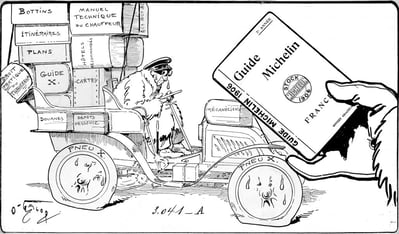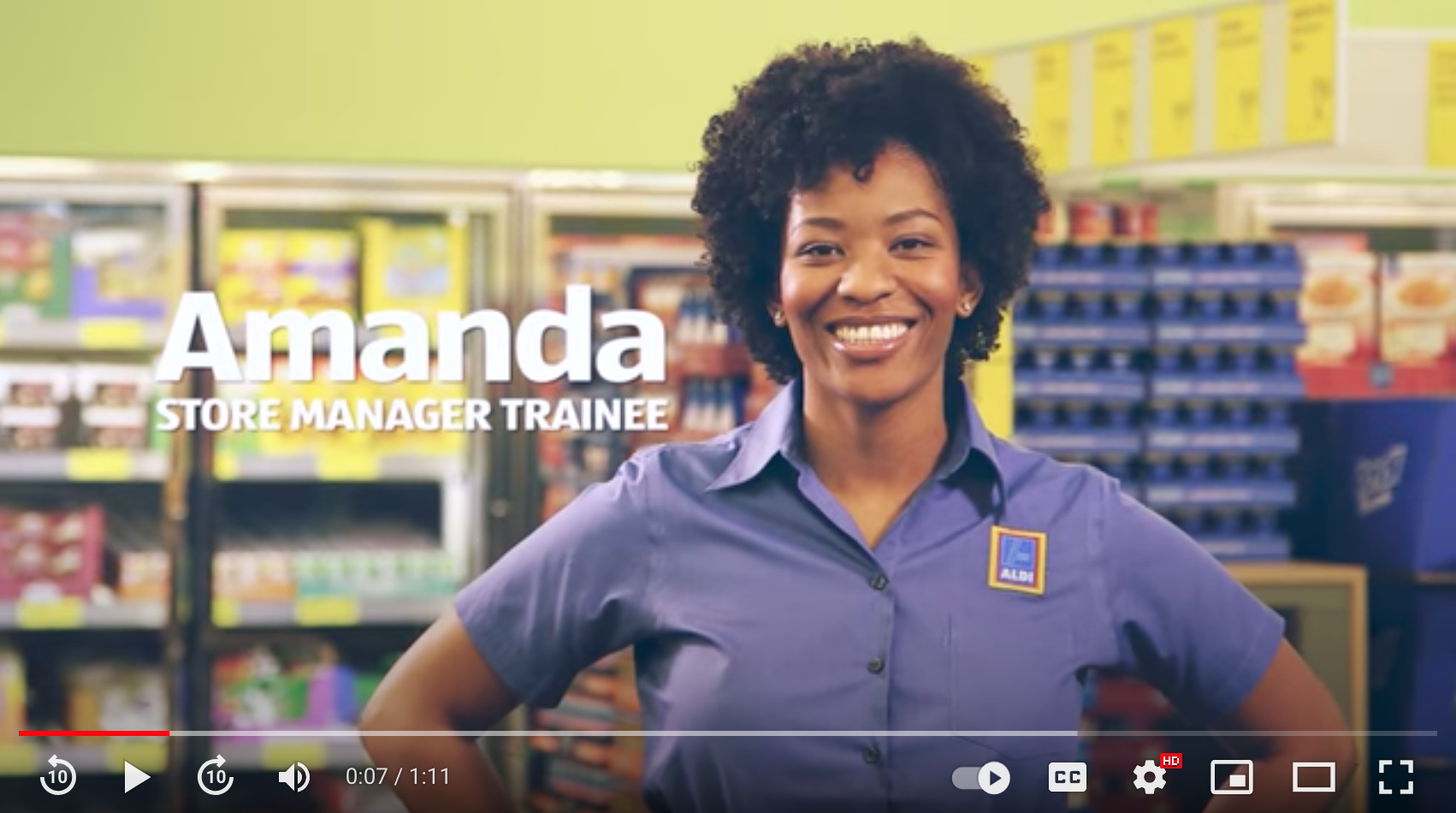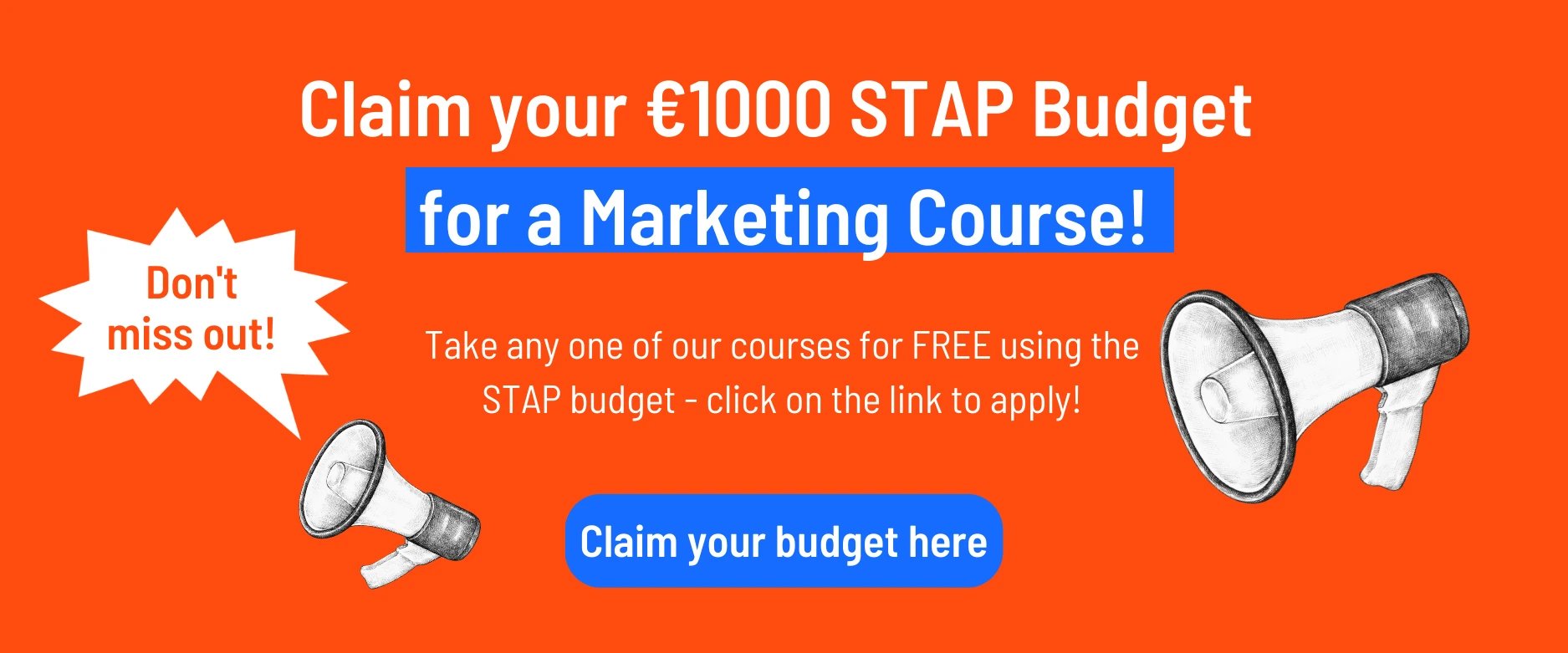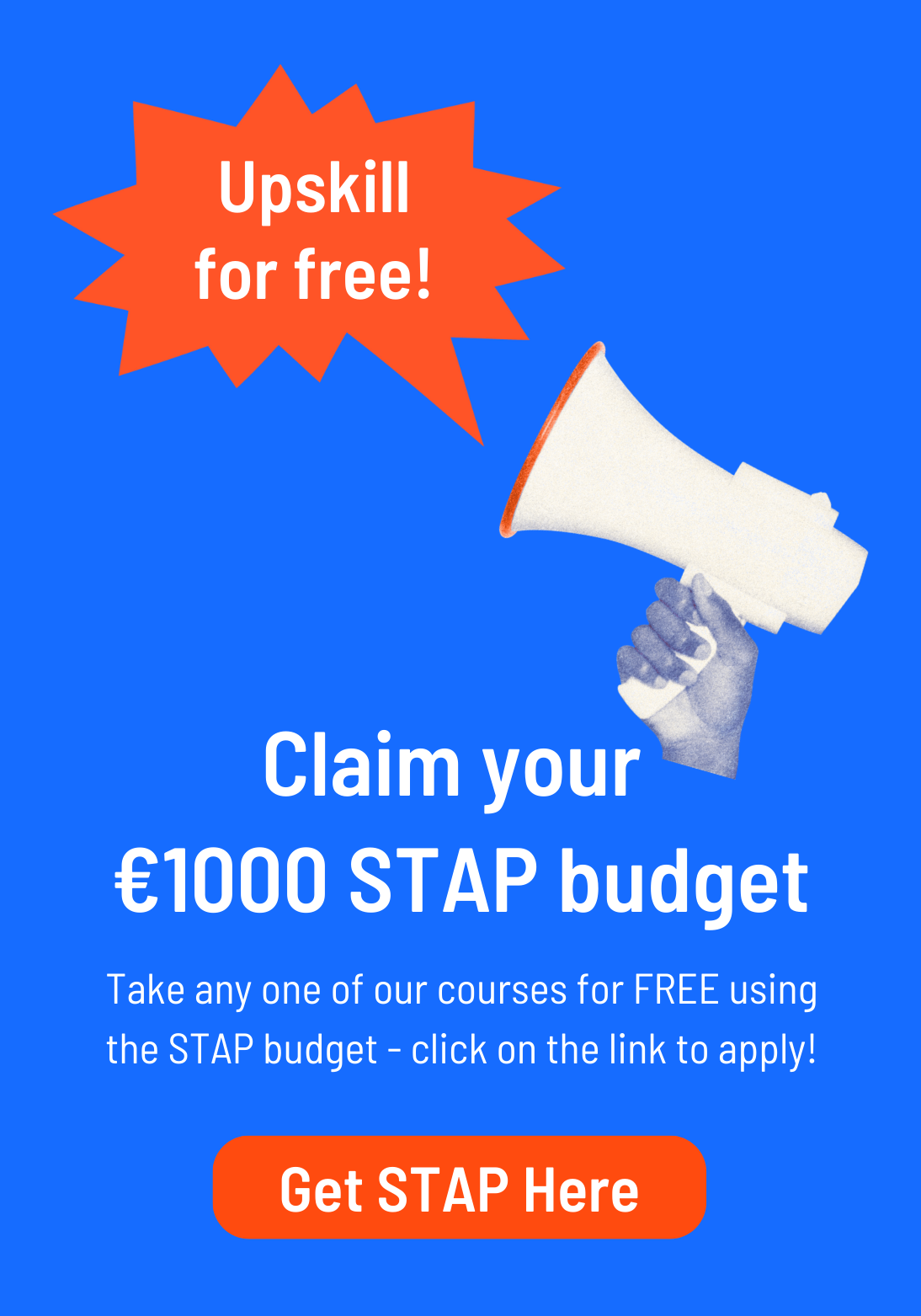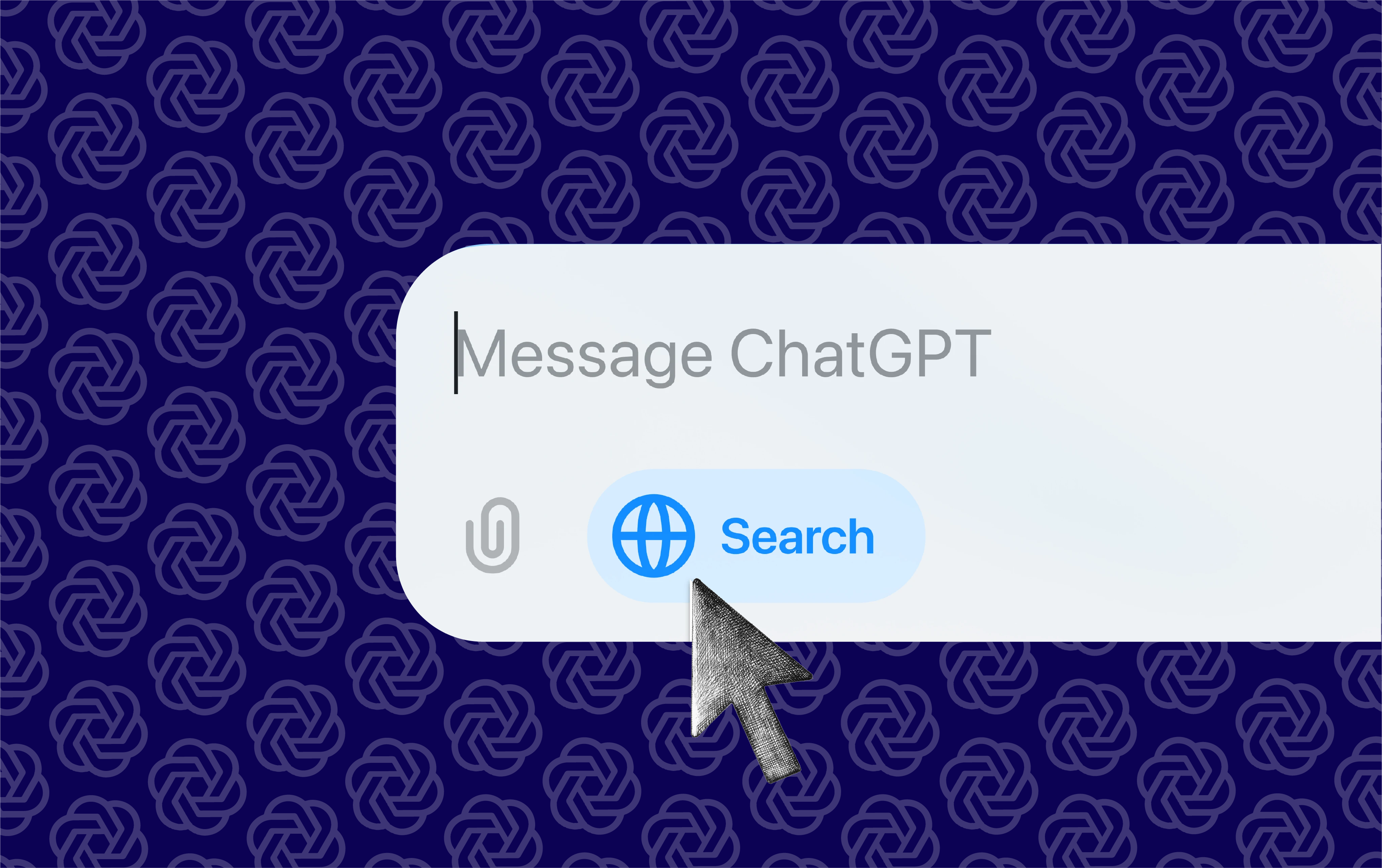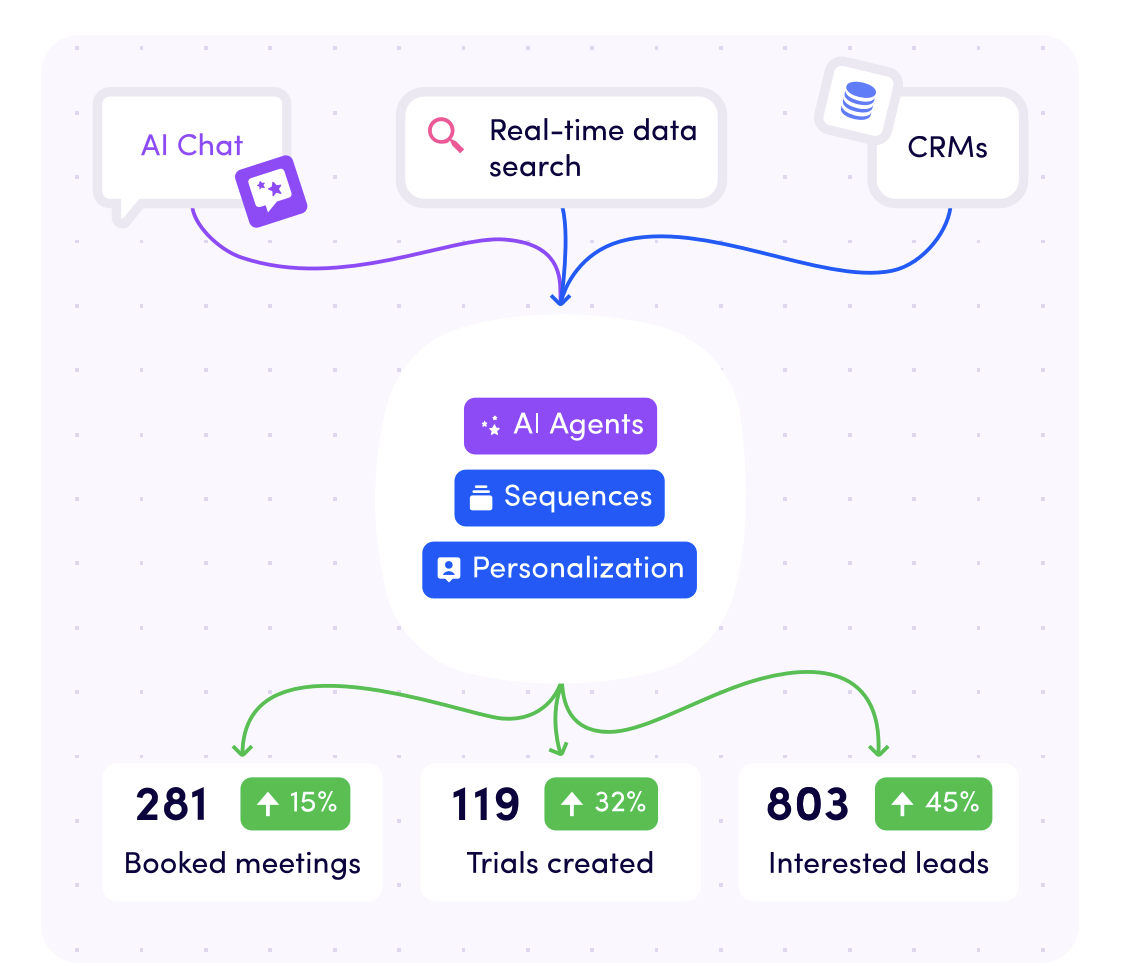How to apply content marketing? The ultimate guide!

If you’re looking for a comprehensive guide to content marketing, then we’re delighted to inform you that you’ve arrived at your destination.
But first, we’ve got some potentially upsetting news…
Your business is in a quandary. On one hand, you need to outperform your competitors and reach your target audience. But on the other, you’re quickly realising that traditional marketing tactics that are disruptive actually hurt your chances of building strong customer relationships and alienate prospects.
So, what’s the solution?
You need to get in front of your target audience in a way that feels natural and serves the customer first. You also need to create content that resonates with them on a base level, addresses their pains, builds trust and has enough spice to inspire action.
You need content marketing.
In this guide, we’ll take you through the ins and outs of content marketing, including the different types, examples and how to create an effective content marketing strategy. You might want to extend that lunch break.
Ready? Let’s dive in!
Looking for something specific? Jump to a section using the table of contents below:
What is Content Marketing?
Content marketing is a strategic marketing process where you plan, publish and distribute written or visual content that is relevant, consistent and valuable with the goal of attracting, engaging, converting and retaining customers.
People often associate content marketing with blogs (like this one), and while it’s true that blogs are certainly an important part of your content strategy, they’re not the be-all and end-all.
The advent of smartphones and interconnected technology has opened the gates for anyone with an internet-ready device to create professional, sleek-looking content. You can produce video and audio content with ease, such as ads or podcasts, and design useful infographics through a suite of simplistic graphic design apps. All of which can be shared to social media platforms or websites in an instant.
These primary content formats - video, audio, and written - make up the Venn diagram of content marketing. Each of them is important and when used in tandem, they form a potent mix of content that your customers can devour. Yummy.
So what about those words that are emboldened at the top - relevant, consistent and valuable? These are the adjectives you should be focusing on. Because it’s these three words that separate content marketing from outbound strategies.
We’ll explain.
Why is Content Marketing Important?
On the surface, we can say that content marketing is essential because it nurtures and generates leads. It also builds trust with your audience which leads to more conversions and higher retention rates. This is all fantastic but it doesn’t explain why.
The answer is simple. The customer of today (and tomorrow) has grown weary of aggressive marketing tactics. There’s a time and a place for unbridled self-promotion but in the main, customers prefer to voluntarily interact with high-quality content from the brands they love. They want to feel valued and eased into the sales funnel. This is the art of content marketing.
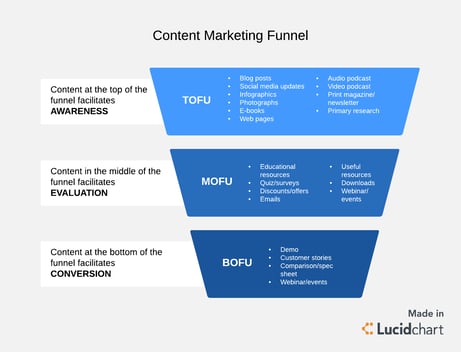 Source: Lucidchart - 4 phases of a winning content marketing funnel
Source: Lucidchart - 4 phases of a winning content marketing funnel
Did you know that over 70% of customers will buy more often from a brand they trust? And it works in reverse too, with 71% of customers abandoning a brand if their trust is broken. What these stats tell us is that the need for relevant and valuable content is clear.
Now that you understand why content marketing matters, let’s look at the granular effects:
- Content marketing builds authority in your niche, adding credibility to your brand.
- It offers supreme value to your customers by educating and informing them on topical interests.
- You generate higher-quality leads by using keyword research to answer your audiences’ most common search queries.
- SEO-optimised content can improve your search engine ranking.
- Content marketing generates organic traffic and has a better ROI.
- Your competitors are already using it. 97% of businesses use content marketing.
- Great content promotes more loyalty from your customers.
And this is really the tip of the iceberg. Content marketing has so many distinct benefits for your business.
History of Content Marketing
In many ways, content marketing is a modern form of storytelling. You’re essentially imparting information, advice and wisdom to your audience. Storytelling's primordial roots can be traced back to the dawn of civilisation, but what about the practice of content marketing? When did this begin and what are the earliest examples of it?
The evidence might surprise you. We think of content marketing as relatively recent, but thanks to dedicated researchers at the Content Marketing Institute, we see it actually dates back hundreds of years. Here’s a quick snippet of the key moments in content marketing’s illustrious history:
- 1732: Benjamin Franklin published his first annual Poor Richard Almanack to promote his business printing business.

- 1801: Parisian bookstore, Librairie Gaglinani, grew its business using modern-day comparative content marketing practices. They opened a reading room to draw more customers, published self-made books and released a daily newspaper that featured articles from influential authors (guest blogging, anyone?).
- 1888: Johnson and Johnson launch Modern Methods of Antiseptic Wound Treatment. This book offered doctors a step-by-step guide on how to perform sterile operations and listed the company’s catalogue of medical products.

- 1900: The Michelin tyre company published The Michelin Guide. A 400-page guide for drivers with useful tips for maintaining their vehicle, it also encouraged drivers to get out and travel with catalogued hotels, restaurants and gas stations. Amazingly, The Michelin Guide still exists today!
- 1924: Sears launched its World’s Largest Store radio programme. Initially, the medium helped to reach the farming community and keep them apprised of developments but it also provided a platform for Sears to venture into comedy and musical shows.

- 1933: The “soap opera” is born through Proctor & Gamble’s sponsorship of a serial radio program, where they plugged their soap product. These were what we’d call targeted ads, aimed at a specific audience to drive sales, in this case, the audience was female housewives needing a superior cleaning solution.
- 1968: Weight Watchers Magazine became the first consumer health-conscious magazine to be distributed at newsstands and supermarkets. This represented one of the early forays into multi-channel marketing.

- 1987: Ever heard of Lego? Sure you have. This was the year Lego launched its Bricks Kicks magazine full of fun child-focused activities. The kicker is that the magazine required children’s parents to sign up for the membership. This meant kids would effectively sell the product to their parents (until they got what they wanted!), a clever marketing strategy by Lego to pull younger audiences into their content.

- 1996-1998: A round-table discussion at the American Society for Newspaper Editors’ conference coins the term “content marketing”. A couple of years later this term gained traction and a professional discipline is carved out for Netscape’s Jerrell Jimerson as the “Director of Online and Content Marketing”.
- The 2000s - 2010s: The internet arrives and with it, we see blogs, online video platforms such as YouTube, and social media websites like Facebook take the world by storm.

- The 2010s - present: Since the 2010s, we’ve borne witness to complex technologies such as AI like ChatGPT that assist in content creation and big data systems that help curate the online customer experience. We’re now living in the digital era where content is available at every intersection of our lives and companies can extract insights to inform their strategies.
Types of Content Marketing
As you can see, content marketing comes in many forms, far beyond the sturdy blog post. You might have heard of the “omnichannel” approach, this is where companies distribute content across a breadth of marketing channels to maximise reach and growth. The general philosophy is - the more places your content is, the more chance you have of achieving your goal. So where should you be creating and sharing content?
Let’s look at the most common types of content marketing to bolster your content marketing efforts:
Social media content marketing
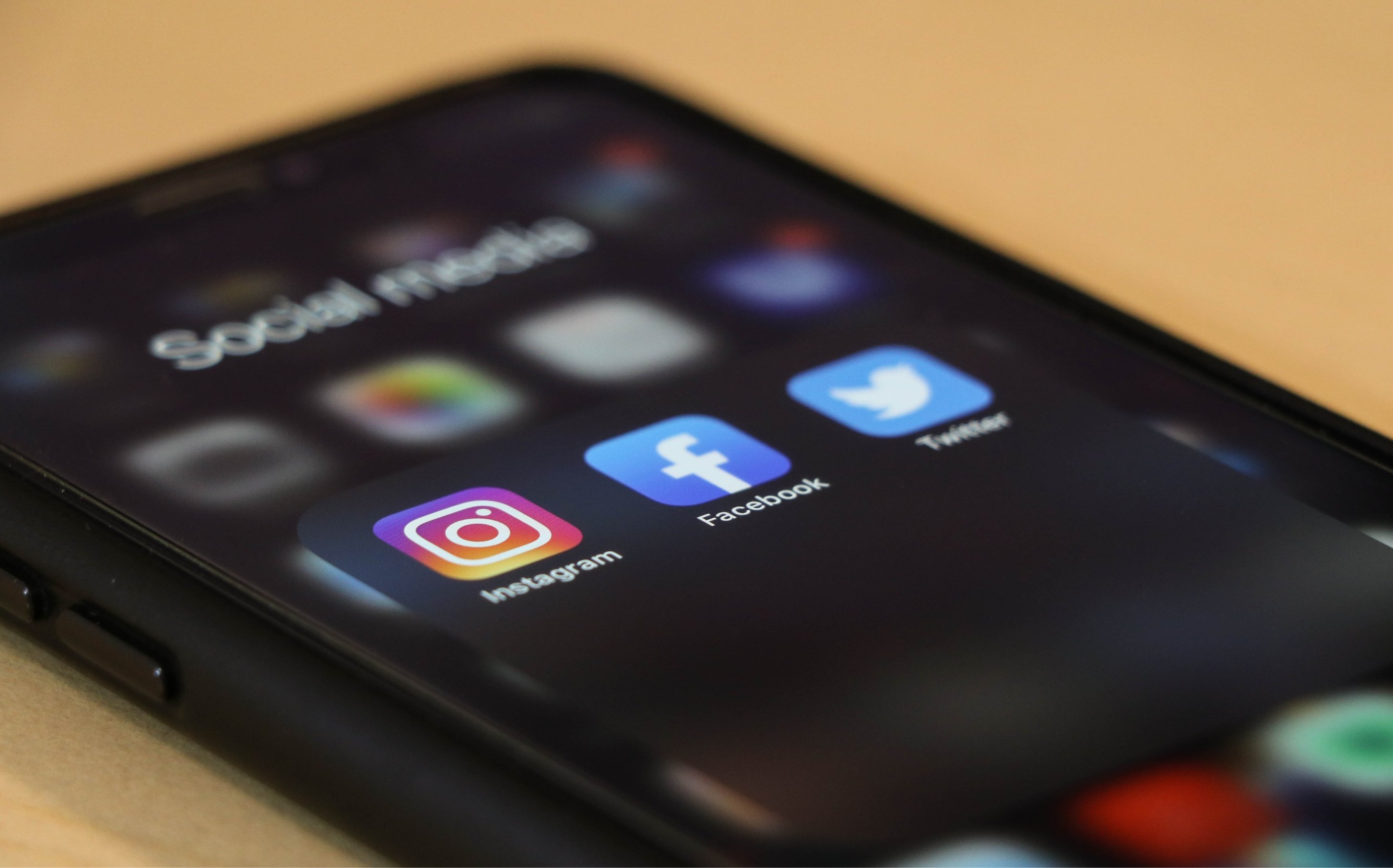
If a website acts as the “shop window” for your business, then your social media presence would be the A-board posted outside directing people towards it. And there are a lot of people out there. Statista reports there are currently 4.89 billion social media users in 2023.
What’s more, Hootsuite reports that 76% of internet users cite product research as a top reason they access social media. This tells us that customers are scrolling social feeds with intent, they want to explore a product or service and potentially further that relationship. They want to peek inside your shop window.
Social media is a valuable content marketing type because it allows businesses to do several things:
- Create curated content that reaches wide audiences organically.
- Analyse social media post performance to see what content works best.
- Promote paid ads to capture target audiences and drive specific goals.
- Use social media platforms to share other content, such as blog posts or links.
- Experiment with different content angles like behind-the-scenes footage, interviews, polls, how-tos, partner collaborations and many more.
Want to know more? Having a well-planned and robust social media content strategy is a good place to start.
Infographic content marketing

You know the saying - “A picture is worth a thousand words”. Infographics embody this concept by condensing complex information into simple and visually appealing graphics.
The versatile nature of infographics means they have a big appeal, here are a few reasons why you should consider using them in your content marketing plan:
- Infographics work well as standalone content or in addition to other content like blog posts and emails.
- They give people a simplified overview of complex ideas.
- Visual content draws attention, it’s easily identifiable and highly shareable which can generate backlinks.
For inspiration, check out these infographic examples to get your neurons firing.
Blog content marketing

Blogging was one of the original ways to market your business and has defiantly stood the test of time. Even now in 2023, 80% of bloggers say it drives results. And 76% of marketers use a blog to distribute content, proving more popular than email marketing and newsletters.
There’s a logical reason for this too, and one that ties into the current consumer-first state of the market. People in general will naturally seek out answers online. For many of us, this begins on search engines like Google. By creating relevant content in blog posts that address these queries, your business stands to profit from customer attention, opening up a relationship that can lead to revenue-generating opportunities.
Here’s what a blog can do for your business:
- Provide valuable information and raise brand awareness through long and short-form posts, guides and listicles.
- Build trust with customers as a credible and reliable source.
- Match user search intent (what people are searching for online) by identifying short and long-tail keywords (the words/phrases they type into search engines).
- Improve SEO efforts to increase search engine rankings and drive traffic.
If you’re yet to start a company blog or it needs a refresh, try these blogging tips to get results.
Podcast content marketing
Ah yes. Podcasts. The new trend that seemingly everyone and their dog are jumping on. Podcasts have exploded in popularity in recent years, sending shockwaves through the content marketing world. In 2022, there was a reported 61 million users listening to Spotify and Apple podcasts each month in the US alone.
But what is about this audio format that makes it so alluring for listeners and businesses?
- Podcasts are incredibly easy to access. You’ll find them on every smartphone and many are free.
- You can listen to them anywhere. 22% of people listen to podcasts while commuting.
- There’s a massive audience. There are currently 464 million podcast listeners in 2023 and this number is expected to grow year on year.
- You can demonstrate thought leadership and authority in your niche.
- Podcasts can be used to repurpose written content (such as blogs) and vice versa.
- You can target more traditional customers who aren’t as susceptible to digital tactics.
- Podcasts are a way to exhibit brand personality, offering listeners new ways to engage with brands through an entertaining and informative medium.
Thinking of getting your brand voice out among the masses? Try these tips to get started.
Video content marketing
One of the main draws for video content is, in a similar fashion to podcasts, how hassle-free it is to engage with it. It doesn’t take a lot of effort on the customer’s part to absorb video, and in today’s on-demand culture, that goes a long way.
Written content will always have its place, but when customers are short on time or need a quick answer, video content offers a solution in a fraction of the time.
So what do businesses think? Quite a lot!
- 91% of businesses use video as a marketing tool.
- 70% of non-video marketers plan to use it in 2023.
- 96% say video marketing has increased their customers’ understanding of products and services.
- 91% say video marketing increased traffic.
- 87% say it has increased sales.
But what about the customers, what’s their view on video?
- 89% of people say watching a video has convinced them to buy a product or service.
- 91% want to see more videos from brands in 2023.
- 73% of people say they prefer watching a video to learn more about a brand’s product or service.
- 51% say that they’re more likely to share video content over any other type.
- On average, people watch 17 hours of video content per week.
Get your lens ready with this video marketing guide.
Paid ad content marketing
If you want to get your content in front of people then paid ads will do exactly that. Whether it’s through social media, banner ads or a landing page - pay-per-click (PPC) models are a safe bet for getting noticed. As long as the content is up to par of course!
We’ve rounded up a few stats regarding paid ads:
- 63% of people say they’d click on a Google Ad.
- PPC visitors are 50% more likely to buy than organic visitors.
- 91% of smartphone users made a purchase after seeing a relevant ad.
- 74% of brands say PPC is a huge driver for business.
- Click-through rates are 1.5x higher for PPC than organic.
- 46% of internet users can’t readily tell the difference between paid ads and links returned from organic searches.
For more on PPC marketing, check out Hubspot’s guide.
30 Content Marketing Examples
We can sense that you’re getting fired up! But before you start creating your own content marketing strategy (don’t worry, we’re getting there), how about a healthy dose of inspiration?
We’ve rounded up the best content marketing examples from across the web and a neatly organised list for your gleeful scrolling pleasure.
In the list, we’ll cover content in the following formats:
- Blogging content marketing
- Social media content marketing
- Video content marketing
Blogging examples
Content Marketing Institute
With a community of over 215,000 content marketers sharing their divine wisdom, the CMI is a one-stop shop for all things marketing related. You’ll find a gigantic library of resources that range from digital marketing tips to comprehensive guides, annual state-of-the-industry reports as well as in-person and online events.
A notable stroke of genius within the CMI’s blog articles is the “click to tweet” button. This adds impulsive sharing with a simple click, promoting more engagement and virality for its content.
Hubspot
Hubspot gets over 300,000 visitors per month. And with good reason. Hubspot writes highly-detailed and informative posts on everything marketing-related. Aside from being a helpful resource for all manner of marketers, Hubspot is best-in-class for lead magnets. You’ll find video links, e-books, downloadable reports, templates and guides peppered tastefully throughout their blog posts.
Writer Access
Rock Content’s Writer Acess blog is a great place to get bite-sized insights into marketing-related practices such as conversion rate optimization and SEO. Another interesting element of Writer Access is how much of the content is produced by its own writers. Freelance writers can join the platform or if you’re a company looking for a writer, you can find an author that has a suitable style and hire them.
BuzzSumo
BuzzSumo is a heavyweight in the marketer's toolkit, offering in-depth research and analysis for content. But their blog is pretty awesome too. You’ll find topics on SEO, PR, influencer marketing, competitive analysis and more. The blogs are well-optimised with sharing icons, email subscriber forms and free trial upgrades for full-board services.
Buffer
Buffer is a popular social media tool for creating and planning content but it also features a great blog. You’ll find all the usual marketing topics here full of informative insights but what makes Buffer a content marketing marvel is how they leveraged guest blogging to kickstart their initial growth. Over time this has grown to four separate blogs and all the content is shared via their email lists. This a great example of multi-pronged content marketing.
Work Life
Atlassian’s Work Life blog offers industry-leading insights on how to lead your teams to success. For the target audience, business and team leaders, the blog is a masterclass in matching search intent. The blogs are well-optimised, adhere to SEO best practices and their inherent value has led to a massive readership base.
SEMrush
Semrush is infamous in the marketing world for its advanced keyword research tools and competitor analysis features but boy do they know how to write a blog too! In addition to getting juicy insights on SEO, content marketing and more you’ll find the user experience second to none. Semrush blogs are well organised, with clear SEO hierarchies in place and pack tons of value for the reader.
Copyblogger
Copyblogger has been teaching businesses of all sizes how to create killer content since 2006. Their posts are packed with useful tips and guides on how to do exactly that and are tailored to the audience incredibly well. As you scroll through different blog posts you’ll find thoughtful CTAs offering “free training” - a clever wording that’s hard to resist.
Search Engine Journal
If you want pressing news on SEO, marketing, AI, content and more, this blog is a must. SEJ follow all the best practices for optimising a blog, with links and well-placed CTAs, they also feature ads on the side panel to further target audiences. Perhaps their biggest feat, is how frequently the blog is updated. Daily posts and updates keep the blog fresh and the rankings high.
Moz
Moz were pioneers of the pillar page/topic cluster frameworks. Pillar pages are in-depth articles on a topic, with smaller blogs linking to it, called topic clusters. In totality, this creates a nice SEO strategy that helps search engines find relevant content to match user searches. This practice is an industry-standard today, thanks to folks like Moz.
Social media examples
Duolingo's TikTok
Duolingo has amassed a whopping 6.6m followers. But not because of what you might think. Yes, Duolingo is a hugely popular language learning app but for their social media profile, they’ve put a spin on things - making funny videos using their adorable mascot. TikTok has proved the perfect proving ground for Duolingo to play into industry stereotypes and poke a little fun at themselves. So far, it’s working well for them.
Corona's #thisisliving campaign
Everybody can relate to the dream of sitting on a sandy white beach, soaking up the sun, sea and a couple of cold beverages. Corona knows this, which is why they created a hashtag for this moment. What’s smarter than this though, is how the hashtag cross-pollinates other content. Social feeds are full of people promoting their “best lives” and seeking a suitable hashtag to christen the moment. Enter Corona.
Starbucks #whatsyourname campaign
Starbucks UK partnered with Mermaids, an organisation that supports transgender communities. The campaign worked well for two reasons: one, the campaign iterates on a well-known etiquette of Starbucks staff (writing your name on the cup) and two, the campaign shows solidarity to marginalised communities and shows respect to them by inviting them to share their stories.
Netflix's Wanna Talk About It?
The pandemic hit everybody hard. Mental health was a real concern for many families and individuals and Netflix heard this loud and clear. This was the basis of its Wanna Talk About It campaign which featured high-profile guests (from their shows) launching live streams that invited discussion on sensitive issues, from suicide to domestic violence. The campaign provided a communal space to vent when so many avenues were closed off, hats off to Netflix.
Greggs #VeganSausageRoll announcement
The popular British bakery launched its vegan sausage roll in 2019 to equal parts delight and outrage. The announcement reached over 516 million impressions which included commentary from polarising figures such as Piers Morgan. Although negative, the shares and comments led to online infamy and worked much like a reverse influencer campaign. As the saying goes - All press is good press…
Superdrug
Superdrug wanted to raise awareness about body image issues that affect women all over the world. To do this, they asked 18 designers to edit an image that reflects what the body norm standards are in their own countries. As you can imagine, this produced varied results and drove a powerful message! But what helped Superdrug reach over 1m shares and page visits was how they placed the article in trusted publications like the New York Times and Business Insider. Coupled with the support of celebrities, this campaign spread like wildfire.
P&G's #DistanceDance
P&G partnered with TikTok superstar Charli D’Amelio to promote social distancing during Covid-19. A clever influencer campaign to encourage safety, especially among younger audiences but there was a great cause behind it too. For the first 3 million videos posted, P&G donated to the charities, Feeding America and Matthew 25 ministries. It’s rare that you find a brand confident enough to blend fun with charitable causes.
Apples #ShotoniPhone Campaign
We’re all familiar with Apple. They make excellent products that enable users to unleash their creative freedoms or just get the job done. As tech developed over the years, smartphone cameras started producing striking good photography, rivalling larger, more expensive cameras. To sell this message though, Apple did something as smart as its processing chips - they asked users to prove it for them. By adding the hashtag #ShotoniPhone, people were setting about taking pictures that were featured on Apple’s Instagram page.
Virgin and Made by Dyslexia's #DyslexiaThinking Campaign
Sir Richard Branson (Virgin) and the charitable organisation Made by Dyslexia joined forces to flip the script on what it means to have dyslexia. What was once considered a limiting trait among personnel was transformed into a strength. The campaign highlighted historical and current public figures who possess dyslexia and called for companies to start recognising its unique thinking as a positive. This is reflected in LinkedIn’s skills list, where “dyslexic thinking” can now be selected as a marketable skill.
Airbnb's Support Ukraine Campaign
CEO Brian Chesky truly used his power for good here. As if you needed another reason to support Airbnb’s travel-solving business model, they went and provided one anyway. The Ukraine-Russia war is downright awful, and in early 2022, over 100,000 refugees desperately sought safe haven from a war-torn state. Airbnb.org heard this plea and offered free accommodation to those in need.
Rather impressively, this amounted to more than 48,000 host lending support, 160 countries and regions and 40 charity organisations. Hosts received over $1.9 million from over 60,000 bookings within 48 hours. Way to go humanity.
Video content examples
Red Bull’s Wildest POV Videos

Red Bull is a brand that embraces thrill-seeking adventure at every turn. They aptly created a video content marketing campaign that reflected their audience’s affinity for the same. This montage of user-generated wild clips delivers all the fun and excitement any Red Bull fan can hope for.
Nike’s Marty McFly’s Closet Ad
If you’re 30 and over, there’s a good chance you’ve seen (and subsequently adore) the Back To The Future franchise. In this ad, Nike is betting on it. They created a short teaser trailer dedicated to a specific audience for the launch of the coveted sneaker made famous by Michael J. Fox’s character in the movies. Nike nailed emotional buy-in for its product and built the desire tenfold in doing so.
Dollar Shave Club
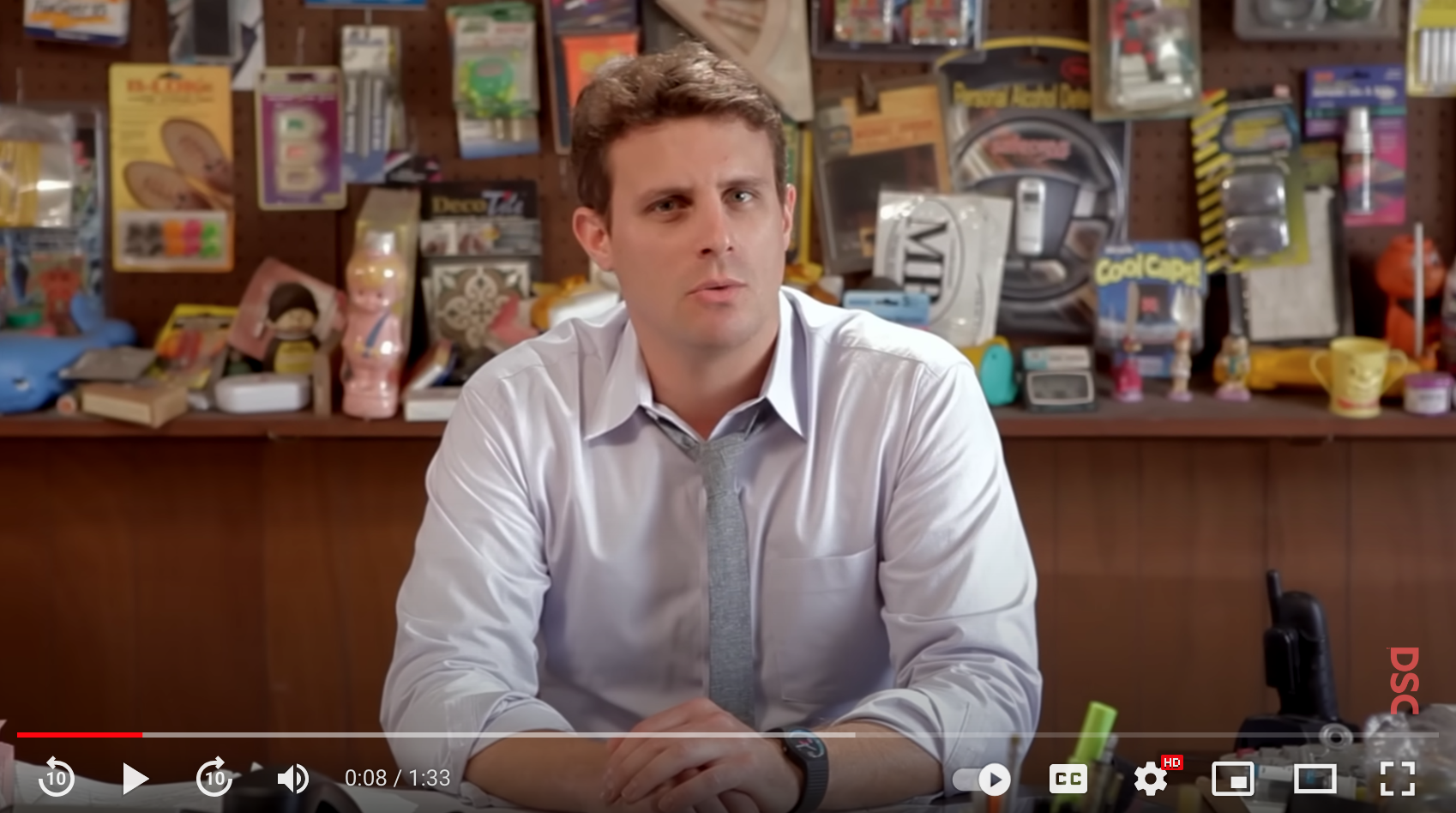
This is one of the classic examples of subversive advertising. Dollar Shave Club saw massive growth after launching this video due to a number of reasons, beyond just how funny the ad is. It taps into a common pain point among men and uses competitors’ products that are all-singing-all-dancing to its advantage, by marketing a simple, straightforward product that appeals to everyone. The setting, tone, actors and subliminal messages are all on point too, further honing in on its target audience.
Pretty Little Thing/ Molly Mae
Pretty Little Thing decided to leverage the mass appeal of influencer marketing and reality-tv style behind-the-scenes footage to create this video campaign. In choosing Molly Mae as a brand ambassador, they found a relatable public figure who embodies their target audience, further building brand trust and boosting sales.
Squarespace’s Make Your Next Move campaign
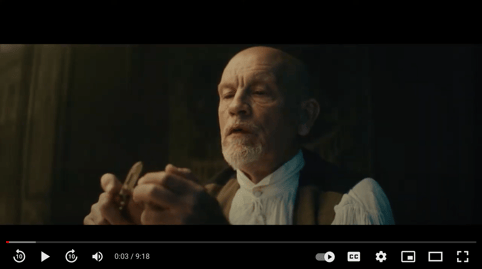
Not every company can afford the acting chops of a global star like John Malkovich. But when they can, magic happens. This video ad captures what it means to take that leap into the unknown and go for it. And who can help you realise those dreams? You guessed it, Squarespace.
Smyths Toys Explainer Videos

Smyths Toys decided to help both adults and children with gentle explainer videos on its YouTube channel. And if you’ve got a catalogue handy, you can scan the QR codes to link through to short videos that will guide you on how to use their toys. We like this one for how it combines tons of value, print media and brand marketing.
Aldi Video Testimonial
When you think of testimonials you typically think of grinning customers desperate to tell you how great a product is and why you MUST BUY IT! But in the global supermarket chain Aldi’s case, they wanted to change the narrative. Here, we see an employee, Amanda, tell us how Aldi helped her grow in her career and become unstuck. It’s a refreshingly different angle and one that creates a great emotional brand connection.
Apple’s Dear Apple Campaign
Apple gives a product marketing masterclass here with its “Dear Apple” campaign. In a series of videos, they introduce disastrous scenarios that are life or death and demonstrate how the unique features of the Apple Watch saved them. From an objection-handling perspective, where customers might be thinking “Do I need this?”, Apple reinforce how their product might just be the best decision you ever made.
VeriSign’s Shopping Cart Whisperer Ad

Before marketers understood the importance of shopping cart abandonment issues (how much money they were losing), VeriSign brought light to the problem with a sweet and funny ad. It’s an excellent use of storytelling and humour to make it memorable while getting businesses to think about a problem they may not have known existed at the time.
Coca-Cola Happiness Vending Machine

Coca-Cola is no stranger to viral marketing campaigns and this video ad is no different. In it, they place a “special” Coke machine on a college campus that’s designed to share a little happiness. In the clip, unassuming customers are met with acts of generosity that elicit huge smiles and all the feels. Even though the viewer knows what to expect, you can’t help but watch until the end.
6 Steps To Create An Effective Content Marketing Strategy
- 1. Set Content Marketing Goals
- 2. Identify and Describe Your Target Audience
- 3. Choose the Right Content Formats and Channels
- 4. Create a Content Marketing Calendar
- 5. Create a Content Distribution Plan
- 6. Analyze and measure results
Now that you’ve seen how the best in the biz do content marketing, it’s time to put together your own content strategy.
You may already have a tried and tested approach or this might be your first time planning. Either way, it’s never a bad idea to take stock and get a fresh perspective.
Here are 6 easy-to-follow steps to build an effective content marketing strategy:
1. Set Your Content Marketing Goals
The first step is to set realistic goals. Without goals, there’s no strategy. And without a strategy, there are no tactics. Content plays a role in a wider marketing strategy, it’s one component of many that all work together to elevate a brand.
Your goals will be individual to your business’s needs but typically, we see these goals at the forefront of a content marketing strategy:
- Increase traffic
- Increase conversions
- Increase customer retention
- Increase brand awareness
- Reduce cost-per-acquisition (CPA)
- Reducing bounce rates/page exits
2. Identify and Describe Your Target Audience
Now you need to think about who is going to see your content. In other words, who is your target audience? This is also known as a buyer persona.
Knowing precisely who your content will resonate with the most, automatically gives your marketing efforts the best chance to succeed. Personas help define this audience so that your content can be tweaked to suit.
Think about:
- Where your customers spend their time online
- What habits do they have
- What demographic information can you gather
- What is your competitor’s audience
- What are your customer’s challenges and pain points
3. Choose the Right Content Formats and Channels
It might sound obvious but you’d be amazed how often businesses get frustrated choosing the wrong content format or channel. And it comes down to this simple truth - just because a piece of content works on one channel, it doesn’t guarantee success on another.
Take time to study the nuances of different channels. See which types of content are popular and have good levels of engagement. This points you in the right direction. Then look at the content types:
- Podcasts
- Videos
- Blogs
- Ebooks
- Social Media
- Infographics
- + more
After researching the channels and types, you’ll get an indicator for the right path. Finally, if you’ve already published content, conduct a content audit and measure your own performances as a guide.
4. Create a Content Marketing Calendar
This one’s nice and straightforward. Creating a content calendar does what it says on the tine. It allows you to plan what, when and where your content will go. Content calendars are essentially spreadsheets to help track content and improve workflows. Plus, you’ll find a bunch of templates online for free.
5. Create a Content Distribution Plan
You might assume that just because you’ve created a great price of content, the accolades will start pouring in. But unless you share and distribute content, even the best can go unnoticed. This is where a content distribution plan comes in.
The Pareto Principle aka 80/20 rule dictates that we should spend 20% of our time on content creation and 80% promoting it. At first glance sounds uneven but as marketers have proven for years now, it works!
As for where you can distribute content, you're spoilt for choice. Common examples are:
- Integrating into email campaigns and newsletters
- Sharing in social media groups and online forums
- Sharing across social media channels
- Collaborating with influencers
- Running paid ads
6. Analyse and Measure Results
You’ve successfully planned, created and distributed your content. Now that it’s out there in the world, all you can do is sit back and wait for the results… wrong! Prudently planned campaigns can still meander off course which is why it’s important to measure performance and adjust where necessary.
Weekly or even daily intervals where teams analyse results allow you to see how your content is fairing against your original goals. Did the content achieve your goal? If not, what could be the reasons? And finally, what can you do to correct it?
This iterative process of planning, creating, distributing and measuring is the lifeblood of an effective content marketing strategy.
6 Content Marketers to Follow
Content is everywhere online and there is no shortage of voices exclaiming to know it all or give advice. This makes it difficult to separate the wheat from the chaff with regard to whose voice is worth listening to. That’s why we’ve rounded up six content marketers who we feel offer sublime value, experience and guidance.
- Gary Vee: Social media juggernaut, podcaster and riveting keynote speaker. Gary Vee has a sixth sense for predicting trends and bases much of his content around practical, direct tips that marketers can follow to achieve success.
- Neil Patel: SEO and digital marketing guru. Neil Patel’s blog produces extremely detailed and actionable advice for marketers and his keyword tool is excellent too.
- Ann Handley: The original “Chief Content Officer”, best-selling author and Forbes’ most influential person in the social media space. Ann Handley is a marketing genius.
- Tim Ferriss: If you haven’t already, at some point you will come across “The 4-Hour Workweek.” Tim is a best-selling author and podcaster who deconstructs what it means to be successful and offers blueprints on marketing and leadership.
- Ryan Deiss: As the founder of DigtalMarketer, Deiss continues to offer invaluable education for digital marketers that everyone should indulge in.
- Joe Pulizzi: Founder of the Content Marketing Institute and best-selling author. Joe is a well-respected voice among content marketers the world over.
Reach, Engage and Grow Your Business with Content Marketing
So that’s a wrap! We’ve learnt how content marketing can be used to achieve your marketing goals. From increasing conversions and brand awareness to building sustainable and valuable relationships with your customers, your content can do it all. As you plan, develop and distribute your content, keep in mind that a customer-first approach will ensure that the value you need is always there. The results will follow.
FAQs
What is content marketing?
Content marketing is a strategic marketing process where you plan, publish and distribute written or visual content that is relevant, consistent and valuable with the goal of attracting, engaging, converting and retaining customers.
What are the different types of content marketing?
Common examples of content marketing are blogs, ebooks, podcasts and social media posts. Really, content marketing is any type of content that is designed to achieve a marketing goal like raising awareness or increasing conversions.
What are examples of content marketing?
This blog is an example of using content to raise awareness for our digital courses. Another example is a brand channel on YouTube that educates viewers on a topic or product. Or, a social media ad displayed in your feed promoting a product or service. All of these are examples of content being used to drive a goal.
Categories
- Business & Innovation (83)
- Growth & Marketing (72)
- Artificial Intelligence (53)
- Data & Analytics (16)
- Case studies (10)
- Project Management (10)
Related articles
Latest articles
AI in Finance: Why You Need It Now
Imagine a world where loans are approved in seconds. Sounds...
ChatGPT Search Unveiled: Should You Make The Switch Now?
Picture this: You’re no longer just “searching” the web—you’re...
Shadow AI Explained: How to Harness Hidden AI Without the Risks
Picture this: your team is under pressure to deliver results—fast....
The 33 best AI tools for commercial teams
The tools are split into 2 categories The best AI tools for your...




